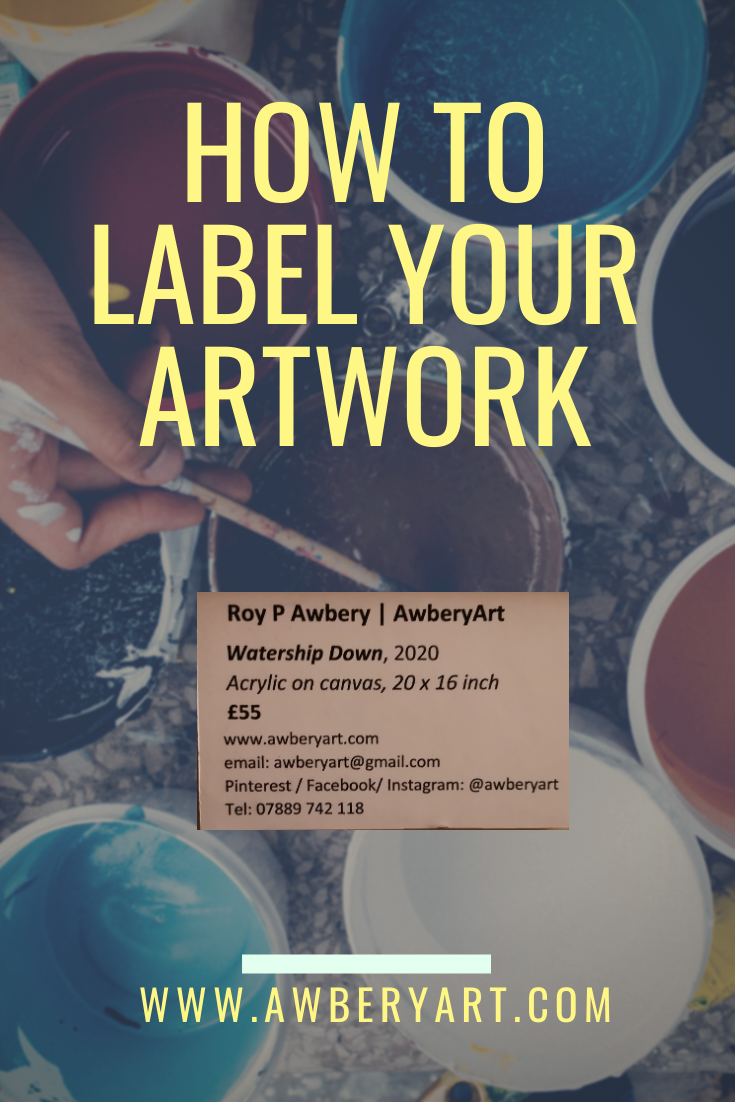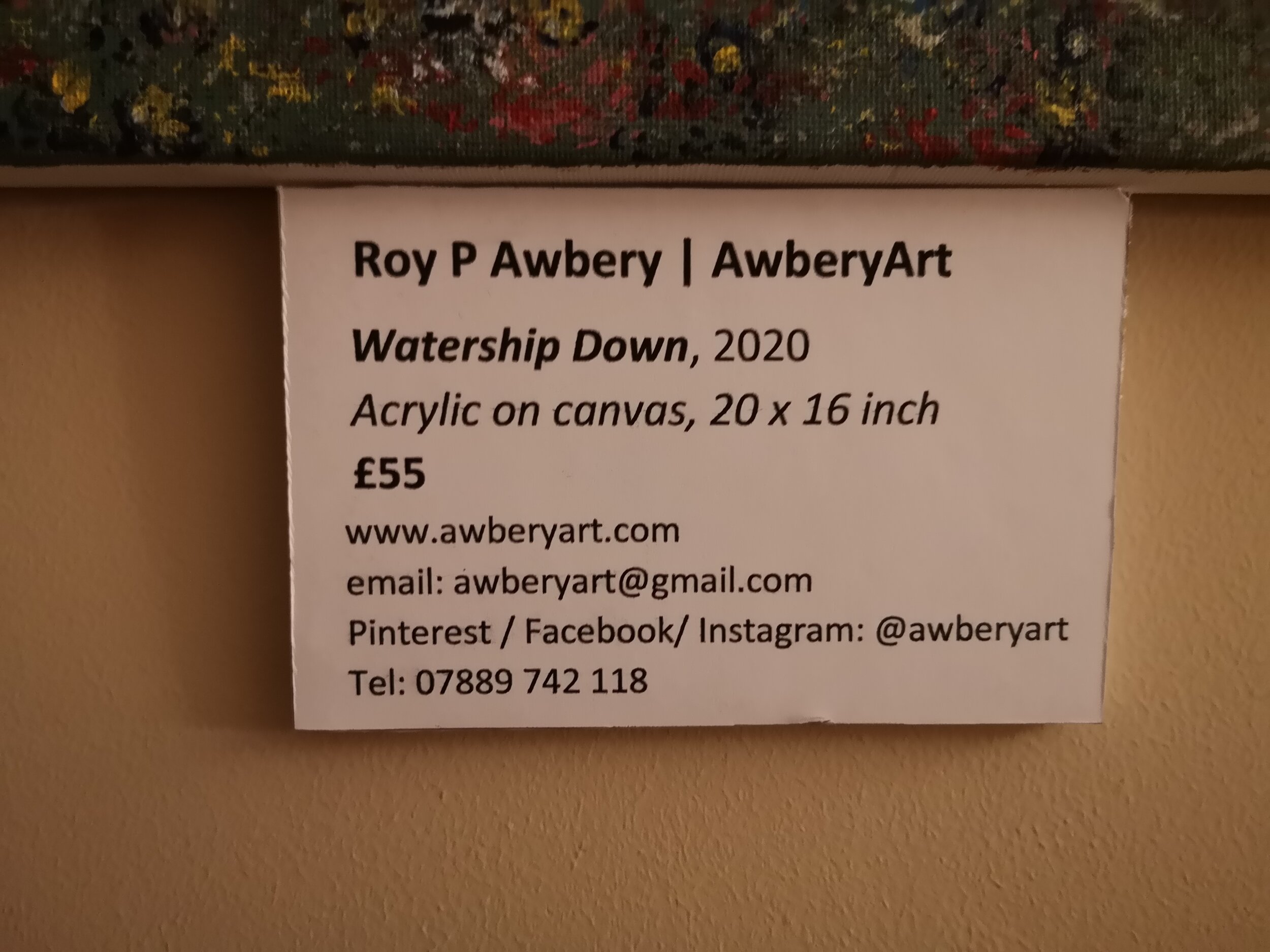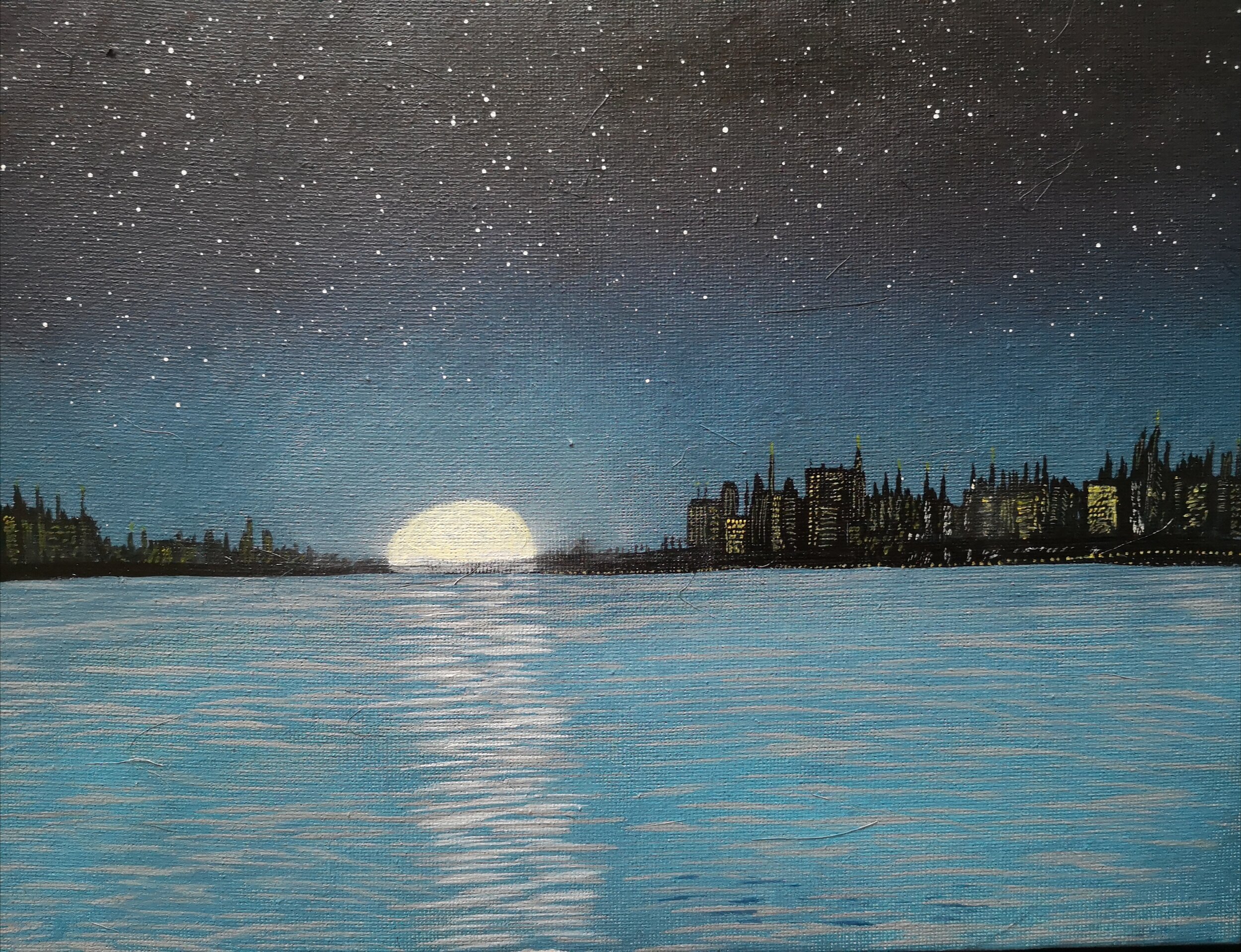Getting engaged! How to master Instagram
Positive engagement is key to success with Instagram and I’ve now learned that it’s good to talk. Good engagement can increase followers and your overall engagement rate leading to more sales.
Instagram is clearly the most influential social media platform for promoting one’s artwork and I can honestly say that I get more engagement, which turn into sales, from Instagram than any other platform. But my following and level of engagement has plateaued in recent months so it was time to come up with a strategy. My previous post discussed the importance of imagery and this one will explore positive engagement. It turns out that it’s good to talk!
It really is all about engagement. There are many accounts out there with apparently thousands (even hundreds of thousands) of followers but all may not be as it seems. It turns out that you can buy followers or even pay to get an inflated number! Of course, this means they are not real followers and therefore not real potential customers. One way to spot this is to look at the level of engagement in someone's post. Someone with over 10k followers but only getting around 100 likes and a couple of comments is clearly not looking too genuine or has a very large but disengaged (disinterested?) audience.
I have therefore learned that success on Instagram is not measured by the number of followers but more by the level of engagement. I now make a point of not only liking an image I genuinely like but also commenting back and sometimes starting a dialogue with someone. It could be about their current work, their inspiration and motivation. Anything, as long as it's meaningful. And it's working. I may only have just under 700 followers but all were organically grown and I get around 15-20% engagement if I count direct messaging. Some of my sales have come directly from Instagram too!
So, put simply, it’s good to talk! I’ve been using this strategy for about a week now and, combined with the photos of me smiling a lot, my engagement rate and number of followers has significantly increased. I’m less concerned with the number of followers as that doesn’t necessarily mean more sales. I think the number of followers is mostly a vanity measure. The engagement level, however, does tend to give an indication of success. If people are contacting me and discussing my paintings it is far more likely that they may want to buy something or, if they are an artist themselves, they may wish to collaborate on a joint article, for example.
It really is good to talk!
First BBC radio and now the company magazine!
It's still hard to believe that I've only been painting for little more than a year and successfully selling paintings for half that time. I've now sold around 30 pieces of my artwork and am still amazed that people actually like my work enough to buy them.
It's been quite a year so far with highlights including being featured for almost an hour on BBC Radio Berkshire, having my art displayed at the Award winning gluten free cafe, Nibsy's, in Reading (twice!) and now…making it into my company's in-house magazine!
It really has been incredible and, as the article states, I am truly humbled by the success I’m enjoying. I keep trying to add more interest to my work so have now begun to record YouTube videos of some of my work. I'm also enjoying being challenged by friends to paint different subjects that take me away from my comfort zone (landscapes). I'm still growing as an artist but I love the fact that I feel that I can legitimately self-identity as one!
Of course, none of this would have happened if people, possibly you, didn't enjoy and purchase my works. Thank you!
Featured in my company’s in-house magazine
Colour blind artist in great company!
How does one stand out in a world full of successful artists? Marketing people will say you need to find your USP or unique selling point. Mine? Being profoundly colour blind.
Can you see the number in the image here? No? Then, like me, you're probably colour blind. Colour blindness can come in a variety of forms including red-green (the most common); blue-yellow and monochromatic. Then there is me! My colour blindness appears to be a mixture of a problem with my eyes but also my brain. Rather bizarrely, I don't seem to be able to recognise most colours except really bold primary ones. Mixed colours completely confuse me and I'm unable to even suggest the name of a colour in many cases. However, I do still see in colour but possibly not quite in the way that you do.
There is no cure for colour blindness despite the ridiculous adverts one sees on the internet. The most awful of these are the correction glasses from Enchroma. They show clips of apparently colour blind people being given the gift of perfect sight with a pair of sunglasses. Thankfully science has stepped in to debunk these nonsense colour vision correction glasses.
So can I really be an artist with such a condition? Well, I'd argue that the proof is clear. Having been a selling artist for little more than a year I've sold 30 pieces. Many were commissions and the client knew I was colour blind. It's become my USP.
Of course, there are plenty of artists out there who are colour blind and some notable greats included. It's believed that as Monet developed cataracts his colour vision failed and even Vincent Van Gogh was thought to be afflicted.
If you're interested in Understanding colour blindness a bit more this link will get you started. Of course you can also ask me.
Can't see the number? You're probably colour blind!
A Winter's tale - another commission finished
Today has reminded me why I love painting and why this hobby of mine has stayed with me when so many others have gone. No, it's not because it earns me money! The smile on the clients face when he saw his painting for himself for the first time. He was rather pleased to say the least.
One happy client with his commissioned artwork by Roy P Awbery
A Winter's Tale by Roy P Awbery - close up
This painting was very challenging but I got a great deal of satisfaction from finally getting this one right. The original plan was just to have a night snow scene but, as the painting developed, the client asked for the addition of wolves and an elk.
I managed to capture a sense of movement with the animals which was not easy. I'd not tried to do it before but it seems to have worked.
I'm seriously pleased how well this one turned out and now understand why my followers were not too happy with the very simple Jumble Animals. Lesson learned!
How to label your paintings and artwork
How to produce professional looking labels for paintings and artwork.
So, after some trial and error, mostly error to be fair, I’ve finally realised how to label my paintings both for display and for sale. It’s actually really simple and all it takes is a little crafting.
First, what not to do:
I’ve now sold my art at a craft fair and on reflection realised that stickers with pricing on them is really not ideal and looks unprofessional. I also had my work displayed earlier in the year and forgot to put any instantly visible details of who I was or how to contact me! More recently though, I saw another artist’s display and they used simple card parcel tags which had the price on one side and the name of the artist on the other. Still far from perfect. However, I then recalled what one sees in galleries and museums: clean, bold labels written in black on a white background with easy-to-read font and all the details anyone could need.
So this how I do it:
( Add your name or business name in bold
Add the title of your work and the year (same size font as above but in italics
Media type and size (and don’t write “mixed media” - it tells no-one anything meaningful!)
Write the price in bold
Next I include my contact details in the following order:
website (and I suggest buying a domain - longwinded web addresses just look amateurish)
Contact email address
Social media handle - I used the same, @awberyart, for all of mine and don’t forget to say which platforms you can be found on
Telephone number - especially useful if you are displaying in a public space such as café, library, waiting room etc.
Now set all of this up up in a word document and insert a single line border around it - this makes cutting easier later. Now go and print it out but see below before you do.
But don’t just print it on paper!
You need to print on good quality thick card that will run through your printer safely. I use WH Smith’s A4 Card which works just fine.
Next, you’ll need some white foam board which I pick up from Hobbycraft.
Now simply glue the cut-out printed label onto the foam board and ut out to create a single 3-dimensional plaque to mount next to your artwork.
How I paint art that sells
The secret to selling artwork and paintings is to create a diverse range of subjects to appeal to a wid audience. Here I explain how I've approached combining my love of art with the challenge of producing art that sells.
I’ve been painting in water colour and acrylic for just one year but have been successfully selling my paintings for at least half of that time. So, how do I do it? There are plenty of websites that tell you how to advertise and promote your work across the social media platforms but these don’t tell you what you need to do with your art to make it appealing in the first place. Unless your paintings are the sort that people want to see every day in their homes they are never going to sell.
My aim when I started painting was to explore and experiment with as many different techniques and subjects as possible and wasn’t even thinking about selling my work. Indeed, it didn’t cross my mind that anyone would even be remotely interested in my work and my early paintings were certainly not of good enough quality to sell.
However, as I continued painting I was also posting my efforts across social media including Pinterest, Instagram and Facebook and even LinkedIn (although I think I was rather abusing that particular platform!) and also telling my friends and colleagues about my work. It turned out that they in turn were telling others. So, it was possibly inevitable that someone might see something they liked and eventually they did. And then so did someone else! It then snowballed from there with requests for commissions.
The commissions have been interesting because none of them were based on subjects that I had previously painted so I saw them as personal challenges. The point is that all of my paintings span a diverse range of subjects and that means I have a range of artwork that could appeal to an equally diverse range of tastes. I also knew that I didn’t want to specialise in just one genre such as landscapes or abstract. I wanted to be free to paint what I like and when I like and in a variety of sizes. The result is that I have a wide range of paintings that I advertise on my website and on Etsy.
Now, I have to be honest and confess that although I do paint a wide range of subjects I have also recently moved into creating a series. The reason behind this is twofold. The first is that if my paintings are successfully selling then it makes sense to make more. The second reason is do with consistency; if I paint two cityscapes months apart they are highly likely to look and feel totally different which could be confusing to collectors. So, I now paint the same types of paintings as a single series so that each painting will have something of a similar style and then be recognisable as my work.
So, I will continue pr producing a range of different paintings and this year my plan is to exhibit my art at as many shows as p possible and then get to test my theory further.
How to paint a cityscape - A Labour of Love
Blog by colour blind artist Roy P Awbery on painting an epic night time cityscape inspired by New York, London and Toronto. The original acrylic on canvas painting took two months to finish. Find out more about the journey here.
The first time I painted a cityscape was a simple 7 x 8 inch canvas using acrylic paint. From a distance it looked okay but it wasn’t great, in my perfectionist opinion. Mind you, I had only been painting for about two months when I painted it. However, I always love a challenge and, having been inspired by my recent trip to New York, decided to have another go. Of course, being me I couldn’t keep it simple and decided to “go large”! And complicated! I never paint from photographs so this was going to be quite a task and I really didn’t know what the end result was going to look like. In essence, I would be as surprised as everyone else when it was finally completed.
My first attempt at painting a cityscape - 2 months after picking up a brush
My first step was to prepare the canvas and I knew that I wanted to create another night time scene but with a greater focus on the illuminated buildings. Because of the scale of this painting I knew that there would have to be some fine detail in the buildings and that an abstract approach wasn’t really what I was looking for. So, the first step was to get the background in and an outline of the buildings.
Background and building outlines complete the first stages
once all of the major elements and buildings were added it was time to start adding the fine detail and this painting was going to be all about the lighting during the night to give that iconic cityscape look. This part took an awful lot of patience and time!
The impression of the city lights beginning to take shape, layer by layer
Once the city lights were added, which was a real labour of love as each light needed to be added carefully and in several layers to get the effect I was after, it was time to move on to the foreground. I knew that I wanted to have a waterfront with the buildings gently reflected off the surface. It turned out to be a lot harder than I imagined and it took many attempts before I could crack it. I lost count how many times the Gesso undercoat was applied to effectively erase my unsuccessful efforts.
City lights almost completed and then onto the foreground reflections - a major challenge!
In the end, and after a great many attempts, I finally managed to get the reflections just about how I wanted them. If I’m really honest, I think they could have been better but I was up against a deadline to ensure this piece was finished in time for Christmas but overall I’m pleased with the outcome. This one is being given away as a gift but I think I will have another go as, despite the frustration and challenges, this was a lot of fun to create. So, here it is, the final finished painting. If you’re interesting in getting one for yourself I will be selling prints via my store at Etsy.
The finished painting complete with reflections.
















